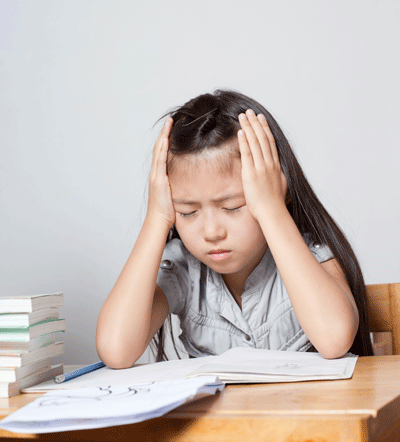 Most children will experience headache at some point in their childhood or adolescence. While these may be a minor symptoms stress or hormonal changes, headaches may also be indicative of serious conditions such as tumors, traumatic brain injuries, or cervical spine disorders. Evaluating the source of your child's headache will rule out these serious conditions. Oakleigh chiropractor Dr. Liveriadis can diagnose and treat headaches in children and patients of all ages.
Most children will experience headache at some point in their childhood or adolescence. While these may be a minor symptoms stress or hormonal changes, headaches may also be indicative of serious conditions such as tumors, traumatic brain injuries, or cervical spine disorders. Evaluating the source of your child's headache will rule out these serious conditions. Oakleigh chiropractor Dr. Liveriadis can diagnose and treat headaches in children and patients of all ages.
Teens are more likely to suffer from headaches than younger children. The prevalence of headaches ranges from 37-51% in kids up to the age of seven, but increases to 57-81% in children up to the age of 15.
Boys are more likely than girls to have headaches before puberty. After puberty, headaches are more common in girls, potentially because of menstruation.
Parents are often unaware of the full extent of their child's headache. In a 2009 study, 61% of teens reported suffering from headache but only 6% of their parents were aware of the condition.
Headaches are closely related to the cervical spine (neck). A 2013 study showed that kids with headache have reduced range of motion and smaller craniovertebral angles than controls.
Children with a family history of headache are at a greater risk for the migraines and chronic headache.
Typically, drugs are the primary medical treatment for migraine and chronic headache. Unfortunately, prescription drugs like triptans may result in unwanted side effects like vomiting and nausea, which may mean your child needs to take anti-nausea pills in addition to triptan. Over the counter pain medications are another option, but pose risks for stomach and kidney damage with long-term use. Additionally, many headache sufferers experience overuse headaches that are caused by taking too many medications.
For parents looking too decrease their child's reliance on medications, chiropractic care could help. Studies show that chiropractic care is an effective, safe way to relieve migraines and cervicogenic headaches. Oakleigh chiropractor Dr Liveriadis will work to diagnose the cause of your child's headache --- whether that be a subluxation (spinal misalignment) or a lifestyle habit like too much stress or skipping meals. He will use gentle, low-force chiropractic adjustments to address any subluxations, and advise your child on ways to avoid headache triggers.
Call North Road Chiropractic in Oakleigh, Melbourne today for safe and efficient headache relief.
References
Budelmann K, von Piekartz H, Hall T. Is there a difference in head posture and cervical spine movement in children with and without pediatric headache? European Journal of Pediatrics 2013 May 26.
Cuthbert S and Rosner A. Applied kinesiology methods for a 10-year-old child with headaches, neck pain, asthma, and reading disabilities. Journal of Chiropractic Medicine 2010 September; 9(3): 138–145.
Lewis, DW. Headaches in children and adolescents. American Family Physician 2002; 15;65(4):625-633.
Jahangiri JN, Vatankhah N, and Baradaran HR. Reduction of Current Migraine Headache Pain Following Neck Massage and Spinal Manipulation. Journal of Therapeutic Massage and Bodywork. 2012; 5(1): 5– 13.
Tuchin P, Pollard H, Bonello R. A randomized controlled trial of chiropractic spinal manipulative therapy for migraine. Journal of Manipulative and Physiological Therapeutics 2000; 23 (2) 91-95.